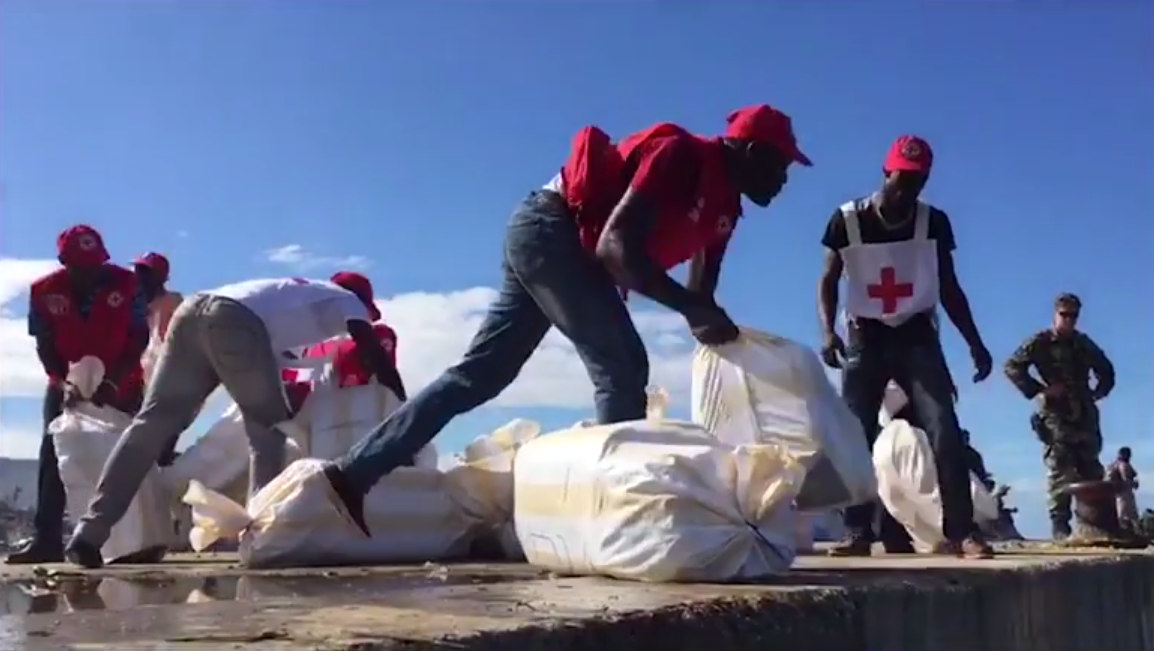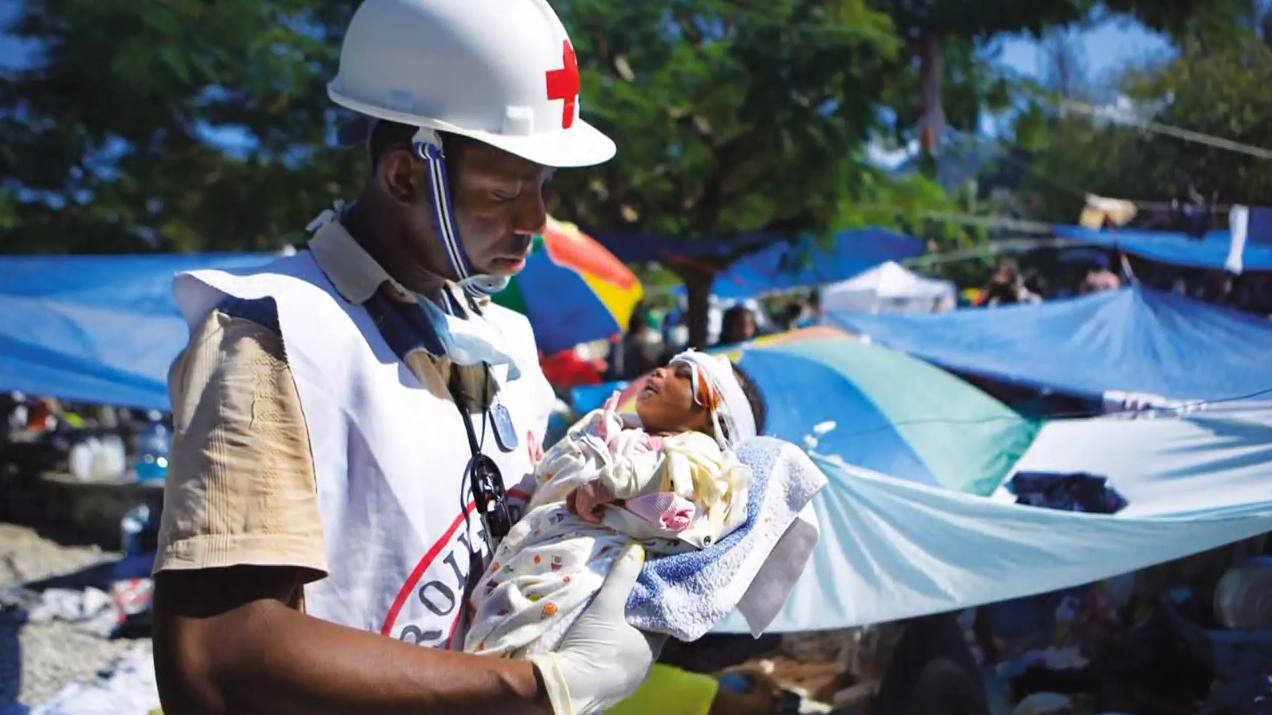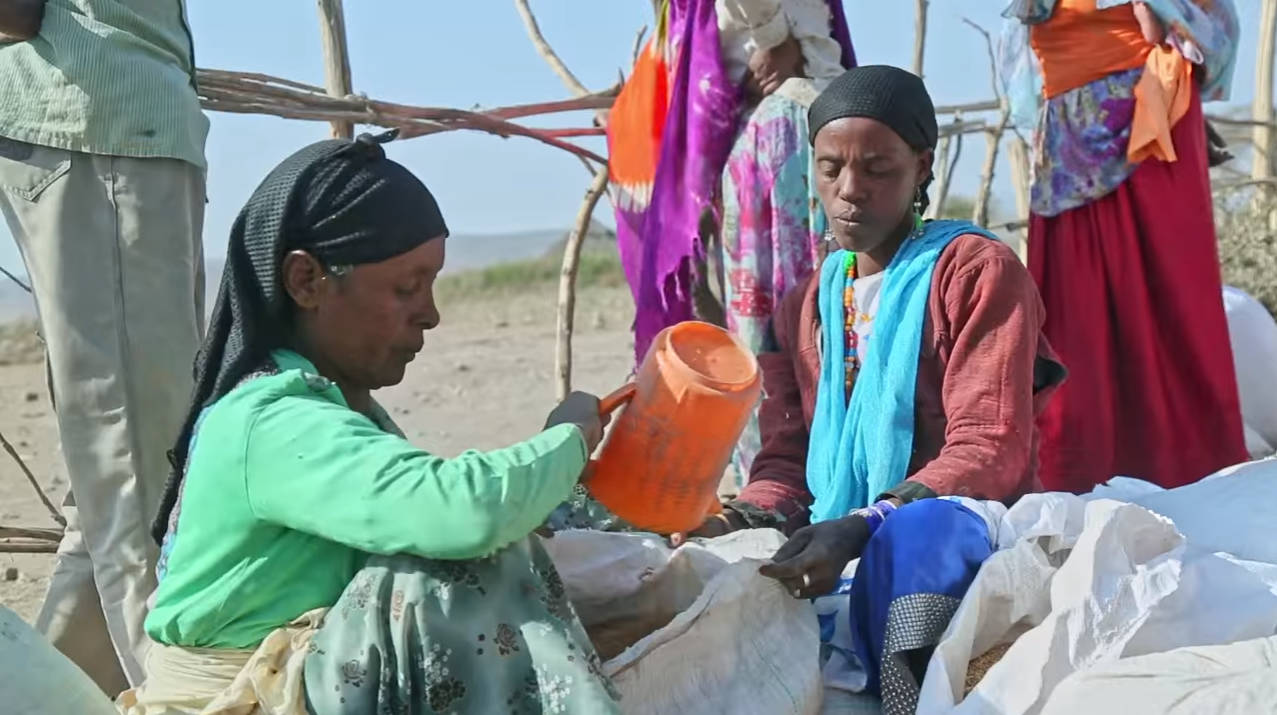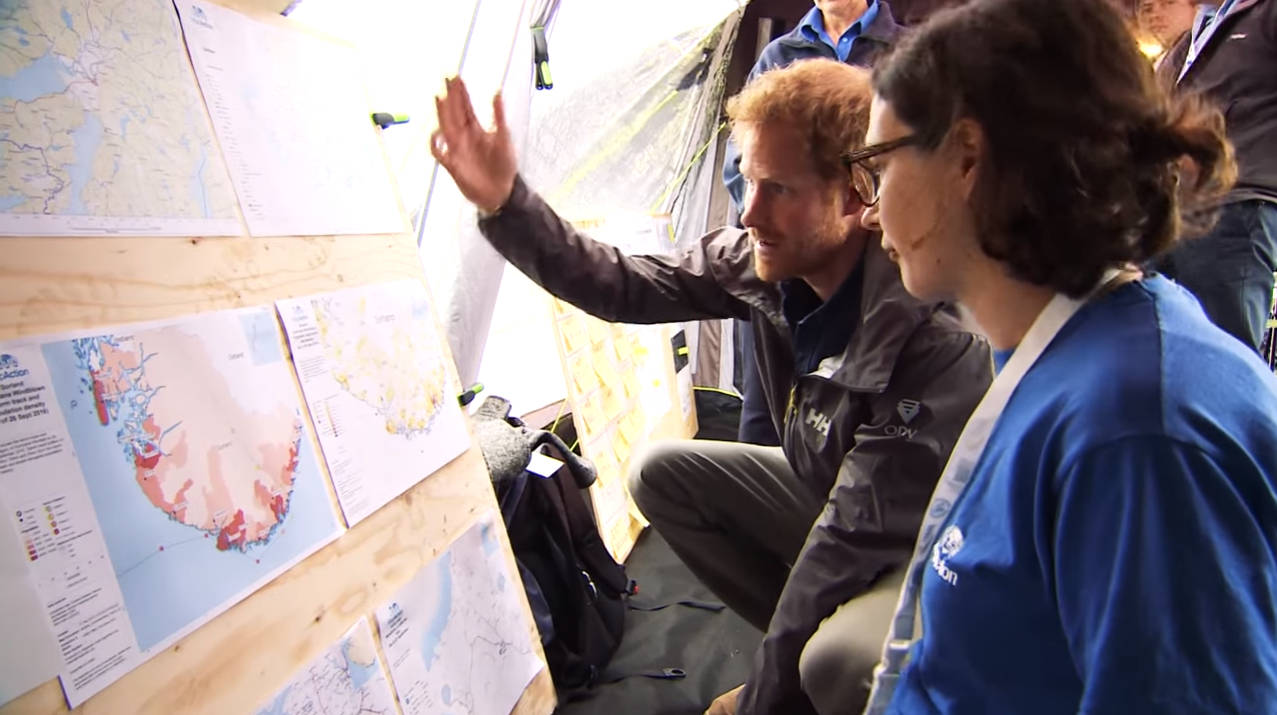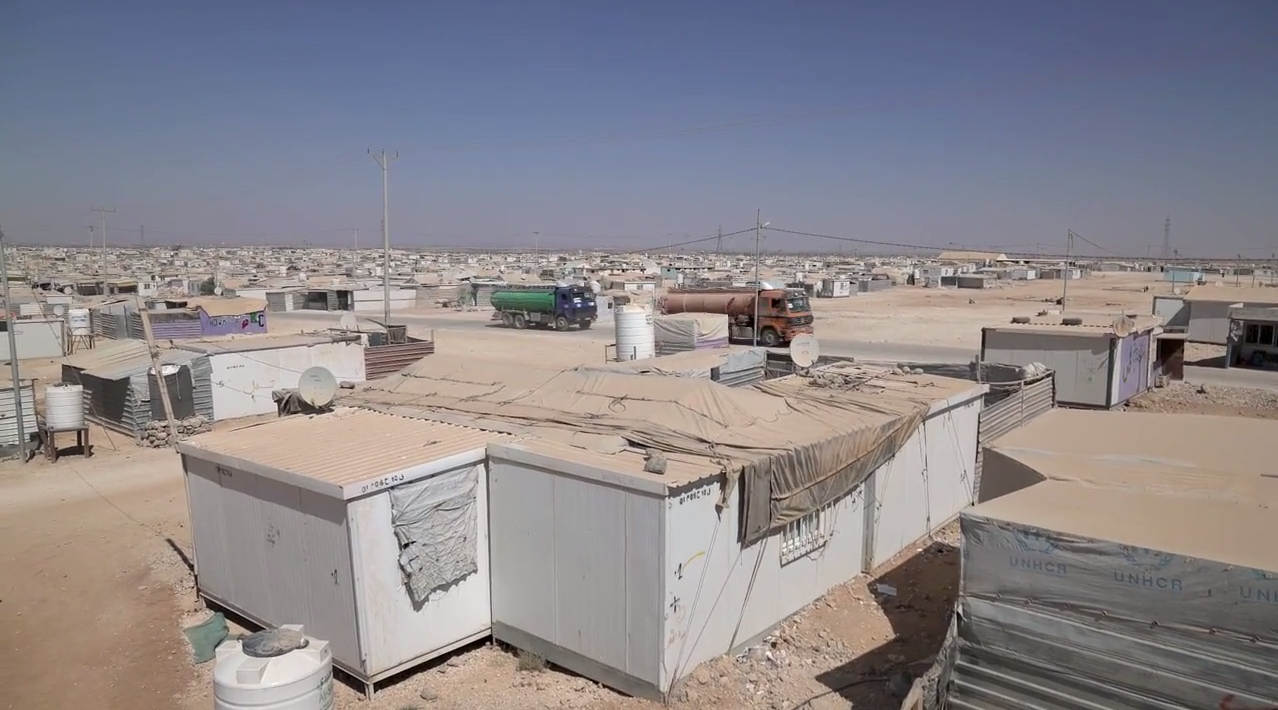Select indicator
 Crisis response to people in need
Crisis response to people in need
To address the effects of major man-made crises and natural disasters, the Netherlands helps the people affected to save their lives and restore their dignity. It does so by providing humanitarian assistance (e.g. food, shelter, protection), both directly and through UN agencies, the Red Cross Red/Crescent movement, international NGOs and local organisations.
People reached with humanitarian assistance
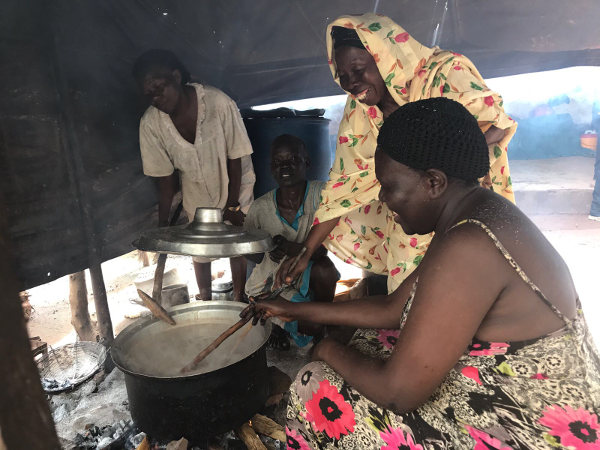
What does this indicator mean?
A key indicator for monitoring the humanitarian assistance provided is the number of people that has been reached and has received aid. To determine exact numbers is quite difficult, for instance because different organisations can reach the same people with different types of aid (e.g. with UNICEF providing education and WFP food aid to the same child).
The Netherlands calculates the number of people reached with humanitarian assistance based on its funding share to humanitarian organisations and the total number of people they reach. The Netherlands uses this calculation method, because most aid is provided (partly) unearmarked, since unearmarked funding is seen as the quickest and most effective way to respond once humanitarian needs arise. The Netherlands provides such funding to UN agencies and funds such as the UN's Central Emergency Relief Fund (CERF), UNHCR, the World Food Programme, UNICEF, NGOs and the Red Cross/Red Crescent movement.
What does the result mean?
In 2016, a total of 27.3 billion dollars was spent on humanitarian assistance worldwide by all actors. The Netherlands contributed EUR 434 million, representing 2.0% of global humanitarian assistance, to support UN agencies, the Red Cross/Red Crescent movement and humanitarian NGOs. To allow partners to respond quickly to people in need, 52% of Dutch funding was unearmarked and 45% was ‘softly’ earmarked.
Throughout 2016, the World Food Programme reached 82 million people, of which 1 million people can be attributed to Dutch funding. Through UN country-specific humanitarian funds, Dutch funding assisted 5.5 million people with the necessary aid in, among others, Yemen, Iraq, Syria and Afghanistan. Through the Dutch Relief Alliance, 3.3 million people were reached in Somalia, Ethiopia, Syria and Nigeria, among others. The International Committee of the Red Cross (ICRC) reached millions of people, of which 459,000 with food assistance.
 Crisis response to people in need
Crisis response to people in need
To address the effects of major man-made crises and natural disasters, the Netherlands helps the people affected to save their lives and restore their dignity. It does so by providing humanitarian assistance (e.g. food, shelter, protection), both directly and through UN agencies, the Red Cross Red/Crescent movement, international NGOs and local organisations.
Humanitarian assistance delivered on time
Hurricane Matthew Operation Response in Haiti (Red Cross/Red Crescent)
What does this indicator mean?
It is imperative that people in need receive the necessary aid in time. The Netherlands therefore works with UN agencies, the Red Cross/Red Crescent movement and NGOs that are able to deliver or scale up aid within days of a crisis or natural disaster occurring. Timely aid delivery not only depends on the capacity of the aid organisation to deliver, but also on the availability of resources to respond. In 2016, the Netherlands set criteria for the timely transfer of humanitarian funds to our partner organisations, to enable fast aid delivery and pre-stocking or pre-procurement.
What does the result mean?
All humanitarian organisations funded by the Netherlands are able to deliver timely aid, based on clear policies or practice. The Central Emergency Relief Fund, for example, is set up to provide flexible funding in the case of a crisis and has become an irreplaceable organisation to kick off a life-saving response. The World Food Programme (WFP) fully achieved its target in 2016 by commencing food distributions within three days of the request for assistance in sudden-onset emergencies. The Dutch Red Cross provides support within 72 hours of the launch of an appeal and the International Committe of the Red Cross (ICRC) is piloting new approaches to further improve efficiency in terms of timeliness.
 Crisis response to people in need
Crisis response to people in need
To address the effects of major man-made crises and natural disasters, the Netherlands helps the people affected to save their lives and restore their dignity. It does so by providing humanitarian assistance (e.g. food, shelter, protection), both directly and through UN agencies, the Red Cross Red/Crescent movement, international NGOs and local organisations.
Adherence to humanitarian standards in providing assistance

Food distribution by the Dutch Relief Alliance in drought-affected Zimbabwe. Pregnant women and young mothers receive food packages in the Zvamabande hospital in Zimbabwe (Photo: Ilvy Njiokiktjien)
What does this indicator mean?
To ensure that people receive adequate assistance, aid organisations and programmes should adhere to certain humanitarian quality standards. The best-known are the ‘Sphere standards’, a set of minimum standards in key life-saving sectors, such as the amount of water a person needs to survive on a daily basis.
Another example is the Core Humanitarian Standard, which provides guidelines on what good humanitarian action looks like for communities and people affected by a crisis. The Netherlands strives to further adhere to these or similar standards and only works with organisations that adhere to these standards.
What does the result mean?
Professional humanitarian organisations or UN agencies adhere to humanitarian principles and have mechanisms in place to check if humanitarian standards are applied. Partners in the Dutch Relief Alliance, for example, have to explain to the alliance when adherence is not possible. UNICEF has supported the development of an in-depth Cluster Co-ordination Performance Monitoring System that will become operational in 2017.
Due to for example a lack of security or funding, adherence to humanitarian principles or standards may be impeded. In those cases the Netherlands advocated for solutions e.g. by asking for more funding from donors, as was the case with the World Food Programme in Syria, or safe access for humanitarian aid organisations, to ensure that people in need receive adequate aid in accordance with the standards.
 Increasing preparedness to respond and the ability to recover after a crisis
Increasing preparedness to respond and the ability to recover after a crisis
To mitigate the effects of humanitarian crises, the Netherlands finances humanitarian programmes that aim to increase the preparedness of authorities, local organisations and civilians to respond.
Preparedness to respond of organisations and authorities
Response Preparedness (Dutch Red Cross)
What does this indicator mean?
By increasing organisations and authorities' preparedness to respond in the case of a crisis, the impact of such a crisis can be reduced. In recent years, organisations have developed or strengthened their 'preparedness to respond' policies and practices, for example by including contingency stocks in their programmes. Supporting local actors and strengthening local capacities are key. The Netherlands has been one of the drivers of the Grand Bargain, a set of commitments agreed upon at the first World Humanitarian Summit, to improve the efficiency and effectiveness of aid delivery. One of these commitments is to strengthen the capacity of local actors by allocating at least 25% of humanitarian funds to them.
What does the result mean?
In recent years, most of the Netherlands' humanitarian partners have developed a policy on preparedness to respond. The World Food Programme, for example, launched pilot schemes in Nepal and Haiti to reduce human suffering by developing early warning systems to forecast climate risks.
Support to local organisations, which can react faster, increased after the World Humanitarian Summit. UNICEF transferred 36% of its expenditure to local actors, to implement humanitarian activities and build their capacities.The humanitarian funds for specific crises, the Country Based Pooled Funds, allocated 18% of their funds through local organisations.
 Increasing preparedness to respond and the ability to recover after a crisis
Increasing preparedness to respond and the ability to recover after a crisis
To mitigate the effects of humanitarian crises, the Netherlands finances humanitarian programmes that aim to increase the preparedness of authorities, local organisations and civilians to respond.
Strengthening the link between humanitarian assistance and development cooperation
Ethiopia: Transcending the Humanitarian/Development Divide (UN OCHA)
What does this indicator mean?
By strengthening the link between humanitarian assistance and development cooperation, the impact of assistance to affected populations is enhanced. The Netherlands therefore finances programmes that strengthen the resilience of people and the links between humanitarian assistance and development cooperation.
This 'nexus agenda' was also adopted at the first World Humanitarian Summit: 'A better way of working is not about shifting funding from development to humanitarian programmes or from humanitarian to development actors. Rather, it is about working collaboratively across institutional boundaries on the basis of comparative advantage'.
What does the result mean?
The Netherlands supports programmes that prioritise resilience and collaboration between humanitarian and development aid. In most cases, this collaboration is reflected in country-specific humanitarian response plans. Particularly in countries such as Syria, Yemen and Iraq, resilience is considered important to increase people’s capacity to confront and withstand continuous shocks and to shore up livelihoods.
In Syria, for example, a multi-sector resilience-building approach was used, focusing on restoring livelihoods, maintaining public and social services, and fostering social cohesion and protection, in an attempt to provide sustainable habitats. Local markets were supported through micro-financing mechanisms to restore affected businesses, such as the textile and sewing sector, the repairs and reconstruction sector, food processing and self-reliance activities.
 Effective humanitarian system through innovation, enhanced leadership, coordination and accountability
Effective humanitarian system through innovation, enhanced leadership, coordination and accountability
To ensure effective and efficient aid delivery to affected populations in crises, an effective humanitarian system is needed, including good coordination, strong leadership, learning, innovation and accountability. The United Nations leads humanitarian assistance coordination.
Effective humanitarian assistance coordination
Volunteer humanitarian mapping team at a major disaster simulation exercise in Norway (MapAction)
What does this indicator mean?
Globally, the need for humanitarian assistance has increased. However, the resources available to respond to these disasters have not grown accordingly.
To use the resources available as efficiently and effectively as possible, it is of the utmost importance that humanitarian actors respond in a coordinated way. This enables them to do their work effectively and reach and help as many people as possible. UN agencies lead the global coordination of aid through thematic clusters, e.g. education, protection and water, sanitation and health. This is where UN agencies, international NGOs and national organisations plan for the delivery of humanitarian assistance. Despite the progress made, there still is room for improvement. The Netherlands is therefore working towards an effective humanitarian coordination system.
What does the result mean?
In 2016, the Netherlands advocated for effective coordination of humanitarian assistance during field visits and high-level meetings, for example at the OCHA Donor Support Group. The Netherlands provided unearmarked support to UN agencies, one being the UN Office for the Coordination of Humanitarian Affairs (UN OCHA). UN OCHA coordinates the global humanitarian system and the relationships between humanitarian actors and national governments.
Formal coordination structures are in place at global, country and local level and in all countries that launched a humanitarian appeal.
 Effective humanitarian system through innovation, enhanced leadership, coordination and accountability
Effective humanitarian system through innovation, enhanced leadership, coordination and accountability
To ensure effective and efficient aid delivery to affected populations in crises, an effective humanitarian system is needed, including good coordination, strong leadership, learning, innovation and accountability. The United Nations leads humanitarian assistance coordination.
Transparency of humanitarian assistance
What is the International Aid Transparency Initiative? (IATI Videos)
What does this indicator mean?
To enhance the transparency of humanitarian funding and accountability to the people affected, the public and donors, at the 2016 World Humanitarian Summit, adopted transparency as one of the key objectives for the coming years. Since transparency is also essential to determine the most adequate - and quickest - response and to enhance learning from good and bad practices, it is one of the Dutch priorities.
What does the result mean?
In 2016, the Netherlands participated in the first World Humanitarian Summit. One of the key outcomes of this summit is the Grand Bargain: a set of commitments to enhance the efficiency and effectiveness of humanitarian assistance.
Together with the World Bank, the Netherlands is taking the lead in the Grand Bargain's transparency commitments. By supporting the NGO Development Initiatives that advances the use of the International Aid Transparency Initiative (IATI), transparency via open data is enhanced. In addition, the Netherlands asks partners to report via IATI as a prerequisite for funding. By doing so, humanitarian partners become accountable via open data to the public, their donors and most importantly, the affected populations.
 Effective humanitarian system through innovation, enhanced leadership, coordination and accountability
Effective humanitarian system through innovation, enhanced leadership, coordination and accountability
To ensure effective and efficient aid delivery to affected populations in crises, an effective humanitarian system is needed, including good coordination, strong leadership, learning, innovation and accountability. The United Nations leads humanitarian assistance coordination.
Innovation of and learning within the humanitarian assistance system
Improving management of waste water evacuation from the Za’atari refugee camp (UNICEF & UN Global Pulse)
What does this indicator mean?
The need for humanitarian assistance is increasing. With the environmental changes foreseen and a world population growing exponentially, the need for humanitarian assistance may very well further increase over the coming decades.
To address this challenge, more effective and evidence-based humanitarian innovation processes and decision-making are needed.
It is for these reasons that the Netherlands is advocating for innovation and learning from past mistakes. This will help the humanitarian sector to become more effective and efficient, and to respond more rapidly and adequately to growing humanitarian needs.
What does the result mean?
To ensure an adequate humanitarian response, both now and in the future, the Netherlands has made innovation of the humanitarian sector one of its priorities.
The Netherlands supports several humanitarian innovation projects and has advocated for innovation on many occasions, both at high-level meetings as well as in the field.
For example, the Netherlands has been advocating strongly for the increased use and sharing of big data in humanitarian crises, e.g. through the establishment of OCHA’s Centre for Humanitarian Data in The Hague in 2017 and through programmatic support to UN Global Pulse, an organisation that advocates the use of big data to enhance aid effectiveness.





